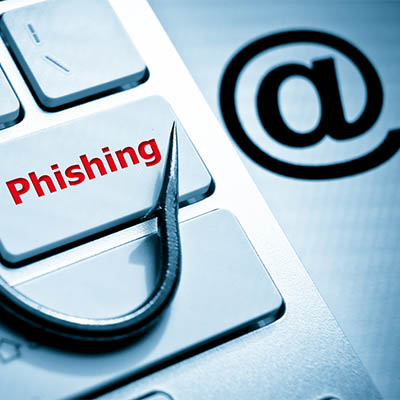
Phishing has been gaining notoriety in cybersecurity circles, as it has been used quite successfully in a variety of business infiltrations and data breaches. Many of the more well-known cyberattacks of the last few years were enabled by phishing. In order to protect your business’ interests, you and your team need to be able to identify these social engineering attempts. We’ll go over a few ways to do so for this week’s tip.
What Is Phishing, Anyway?
Appropriately enough, phishing is when a cybercriminal pulls a bait-and-switch, posing as someone they aren’t to steal data and/or access credentials. By posing as someone else, someone seen by their target as trustworthy, these attackers lull their target into a complacent sense of security.
There are many different kinds of phishing attacks, which can be split into two main categories. The first, general phishing, makes use of an email that is written to potentially apply to as many people as possible, as a means of maximizing the number of potential victims. The second is known as spear phishing, and focuses on quality over quantity. Rather than a generic message being sent to many people, spear phishing requires in-depth research and insights into a specific target. This has commonly proved effective, especially since these messages typically appear to come from an authority figure.
Phishing attacks can be used to steal credentials, infect a workstation or network with malware, or fool a business user into making false orders on behalf of the business. Naturally, none of this bodes well for the targeted business.
What You Can Do to Recognize a Phishing Attempt
There are many tricks that cybercriminals use to disguise their phishing efforts, which can actually help you to identify them… as long as you know what you’re looking for.
- The message’s content itself can provide a few clues. Generally speaking, any requests for a user to update or verify their credentials that are accompanied by (a little too) convenient links are most likely trying to get you to click through to a spoofed website where your credentials can be stolen. Are there any spelling and grammar mistakes?
- The language contained in the email can also be indicative of an issue. Is the email sent to “Customer”, or is it sent to you? This lack of personalization is a sign that this email is likely a generic phishing attempt, as there is no reason for a legitimate business correspondence not to include details like your name.
- Is it threatening? If the supposed sender is trying to cultivate a sense of fear and urgency, or has even included the threat of serious consequences, ask yourself if that seems like the best way for a legitimate business to communicate with a client, customer, coworker, or contact. On the other side of the coin, is the content of the message too good to be true, like claims that you won the grand prize in a contest that you never entered? This is a strong indicator of a phishing scam.
- Are certain details within the email just a little bit… off? Are logos and branded banners in the message not quite the right color? Is the account that sent the message a business account, or a Gmail account that any J. Random Hacker could throw together? These are warning signs that something is rotten in the state of Denmark.
- You also need to closely examine any (little too) convenient links, as referenced above. It is incredibly easy to make a hyperlink appear to say one thing while directing a user to another website entirely. Without clicking, hover your cursor over the link to check the URL. Does it include an unexpected subdomain (a word where ‘www’ usually is), or is it misspelled?
Are there any additional periods or dashes in the URL before the first forward slash? For instance,
“www.example.com/seewhatimean”
and
“www.example.com.sample/seewhatimean”
may look very similar at first glance, but only one will take a user to a legitimate domain.
Phishing is a frustrating issue to deal with, but it’s an even more frustrating thing if it is successful. Reach out to the professionals at COMPANYNAME to learn more best practices to avoid phishing attempts – call PHONENUMBER today!